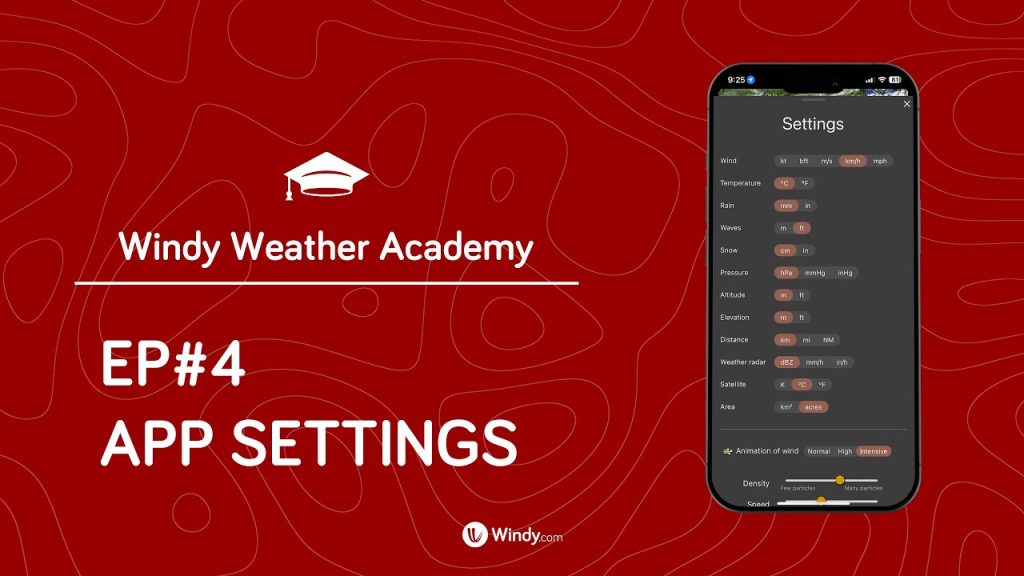Windy weather changes how a phone behaves. Bright screens fight glare, radios work harder as towers get crowded, and push alerts stack right as a front rolls in. The result is a jumpy session when the goal is simple – check the sky, skim a score, and keep the evening moving. A calmer approach relies on plain habits: set up a home screen that respects attention, keep a clean path for both weather and sports, and move risky steps to a safer connection. With this rhythm, checks take seconds, battery lasts through the late hour, and the screen fades into the background while the wind has its say.
Prep Your Weather-Smart Home Screen
Start at home where choices are clear. Pin a tiny note on the first row and title it with tonight’s plan – “Wind watch, park walk, match updates.” Place your weather app and messages beside it, then sweep stray icons off the page so thumbs stop wandering. Hide lock-screen previews in public to protect private lines. Set Do Not Disturb for two hours while starred contacts still reach through. Clear a couple of gigabytes so radar tiles and short clips land cleanly. Wipe the lens so fast photos don’t look foggy when cool gusts meet warm hands. Small moves like these remove the stalls that steal attention when a warning pops up or a game swings late.
Keep the doorway to live info fixed and familiar so checks stay short. Inside that pinned note, save one trusted page for scores and open it as part of normal reading, not a detached link. During a lull, a sentence that includes read more delivers the state of play without a hunt through ad pages, then the phone goes back to the pocket. Anchoring the tap mid-line matters – no dangling URL, no extra motion, and no slip into copycat tabs. Pair that with your local wind and rain alerts, and the evening gains a steady beat: scan sky, glance at the board, return to the room before gusts or noise push rushed choices.
Public Networks In Blustery Weather – Use Them Wisely
Storm days push crowds onto café Wi-Fi and station hotspots. Those links are fine for headlines and radar loops; they are poor lanes for logins, payments, and fresh installs. Join only the exact network name posted by staff. If a captive page asks for a social login that makes no sense for basic access, step away. Keep private steps on carrier data so redirects and stale cookies don’t hijack a serious task. Fold one short list into the same note as your links so it reads like part of the moment – fast, human, and easy to follow when the wind snaps umbrellas and patience in equal measure:
- Angle the screen away from others and hide previews to protect messages in tight rows.
- Turn off autoplay in social feeds – keep bandwidth for radar frames and the live card.
- Keep Recents lean – note, weather, scores – so each glance opens clean.
- Lock orientation to stop sudden flips when a gust bumps the hand.
- If a page design feels off, close it and re-enter through the saved note rather than guessing.
After a week of practice, this split becomes second nature – light browsing on shared Wi-Fi, private actions on mobile data – which is exactly what keeps evenings calm when gusts lift dust and tempers.
Power, Heat, And Spray – Keep The Device Alive Outdoors
Wind often brings bright breaks between clouds, which tempt full brightness and heat up glass fast. Drop brightness one step indoors before heading out so the screen does less work later. Pause heavy photo and cloud backups until the night ends; background pulls are the real reason streams and maps stutter when towers get busy. Use wired or stable earbuds, so volume stays low and reconnect loops to stop burning power. If drizzle starts, dry hands before each tap – moisture tricks touch sensors and turns clean swipes into messy loops. When the phone feels warm, lock it and set it flat on a dry surface for a minute; temperature falls quickly once glass leaves light, and snappy frames return without a rabbit hole of settings.
When Wind Wrecks Signal – A Quick Recovery Loop
Even with prep, gusty fronts can make signal wobble. Skip the scramble. Close other media apps to free the fast lane. Wait a few beats for a clean result rather than double-tapping, which creates duplicate requests and confusion later. If a stream stalls, lower quality one notch for a stretch, then return to HD once the rush passes. Toggle airplane mode for ten seconds to reset radios, then reopen through the pinned note – not through fresh search results that invite detours. This tight loop takes under a minute and avoids the long chain of “fixes” that usually pile new problems on top of a simple, weather-driven hiccup.
A Calm Finish For Windy Nights
Strong habits make rough evenings feel easy. Set the home screen once, keep one clear route for weather and scores, and place high-risk steps on a connection you control. Save one screenshot of the final board and the last radar frame to a small folder, clear Recents, and restore normal alerts. Replace any page that felt wrong with a source you trust while the memory is fresh. The method looks plain because it is – plain works. The phone behaves when the wind rises. The update arrives on cue. And the night stays about the sky, the people nearby, and the steady routine that brings both to heel when the gusts pick up.

